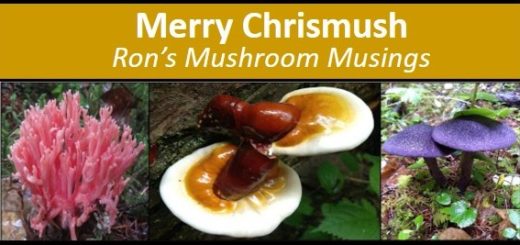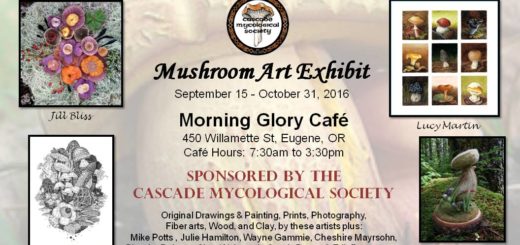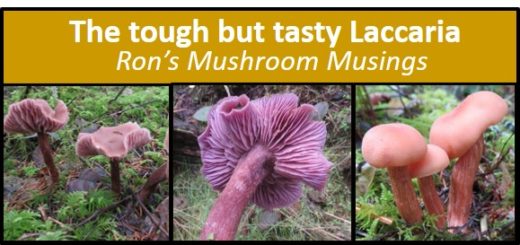Mushrooms Fruiting in February and March
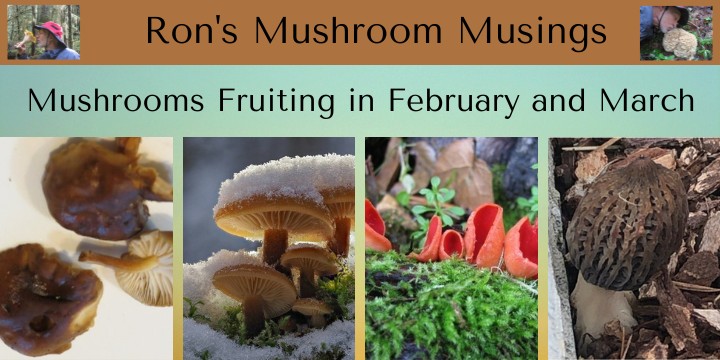
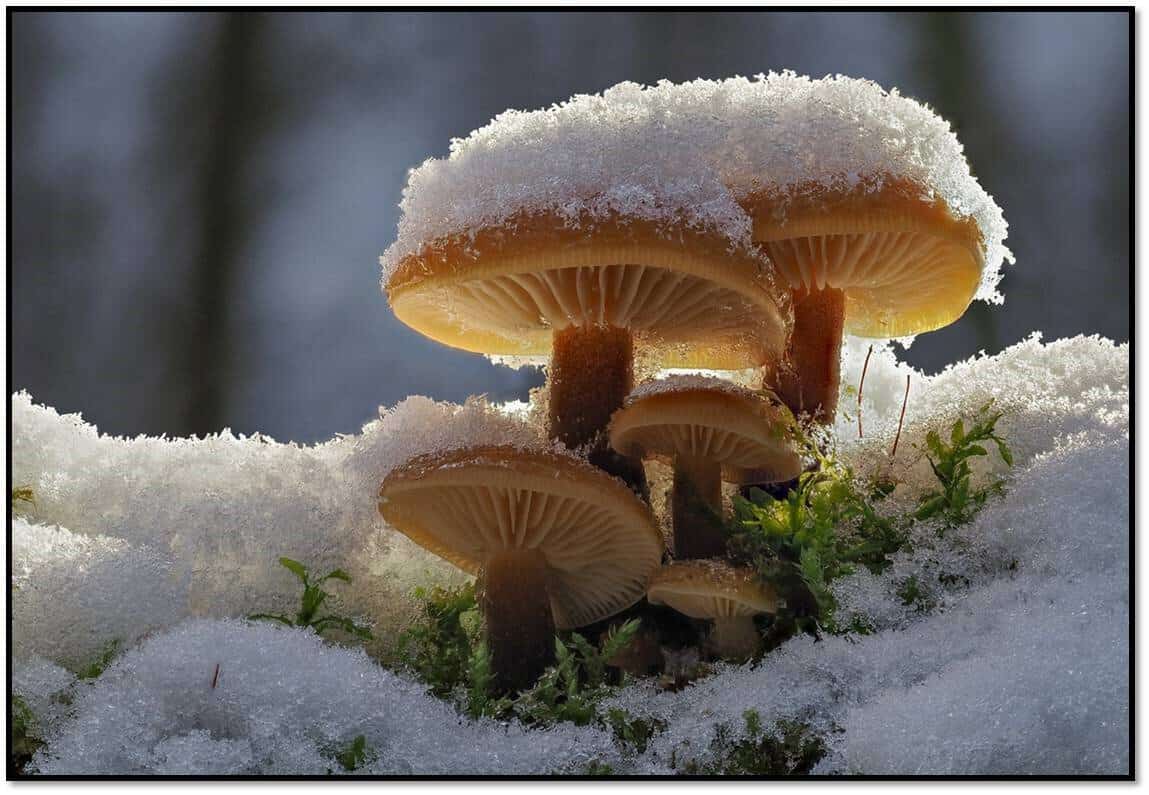
During Oregon’s cold winter months you generally don’t find many Oregonians foraging for wild mushrooms to grace their dinner table. Most of us tend to lean more toward fall and spring when weather conditions are more hospitable for hiking around in the woods. The propensity to limit one’s self to more fair weather conditions is quite common among many fields of endeavor. While browsing around the Web, I found this interesting article on Warfare posted by TIME Magazine.
I clipped this segment from that article as it paralleled so well with our tendency to avoid frigid winter mushroom hunting. “Clifford Rogers, a professor of military history at West Point and editor-in-chief of The Oxford Encyclopedia of Medieval Warfare and Military Technology, tells TIME that warfare was very much a seasonal activity back then. Typically, an army would gather in the spring, invade in the summer, do what they could into the fall, and then break up in the winter, either disbanding or heading to smaller winter camps. Rogers says, when Edward III of England tried to raise a wintertime army to fight the Scots in the 1330s, the men he summoned just didn’t show up; he ended up having to wait till spring.”
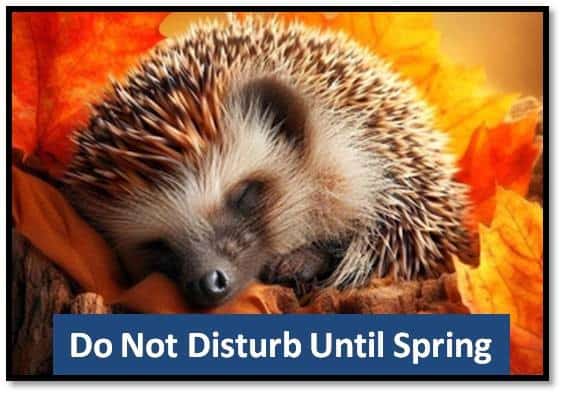
Well, I think Clifford would find a great deal of commonality between those fair weather soldiers and most of us fair weather mushroom hunters. It’s not easy to convince ourselves to bundle up and hike around looking for a few wild edibles, especially when so many grocery stores and farmers markets offer a decent variety of wild and cultivated ones. However, by hibernating at home, you would be missing out on the possibility of finding some of Oregon’s more unusual winter offerings.
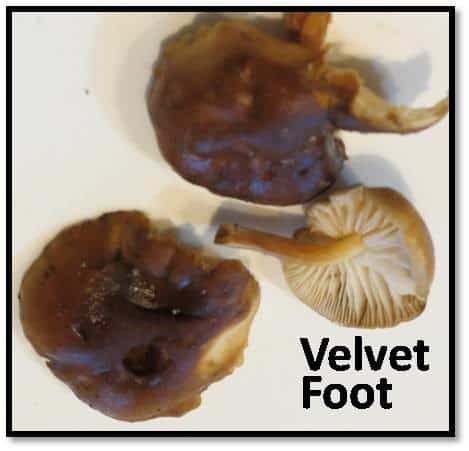
In my February article I mentioned that the saprobic mushroom commonly called Velvet Foot, Velvet Shank, Enoki or Enokitake (Flammulina velutipes) started fruiting on one of our large cultivation logs during December of 2024. Expecting oyster mushrooms to fruit, velvet foot was an unexpected surprise guest but not an unwelcome one. The log it fruited on came from a large tulip poplar tree that we inoculated with a strain of oyster mushroom called Polar White. This strain of oyster is also a cold weather mushroom, fruiting in a temperature range of 35? to 60? Fahrenheit. Velvet foot typically fruits from late fall to early spring when Oregon temperatures range from 28? to 57? Fahrenheit.
It can be found fruiting on dead hardwood such as Ash, Poplar, Willows, Elms, Oak, Maple, and Birch, just to name a few. It is quite the cosmopolitan fungus, willing to accommodate a wide range of hardwood tree species, like our Tulip Poplar log. If you come across velvet foot on your winter walks in the woods, be very careful not to confuse it with the somewhat similar deadly galerina (Galerina marginata). The best way to understand the differences between these two mushrooms is to watch the Enoki vs. Deadly Galerina video created by Adam Haritan of Learn your Land. For a few ways to cook velvet foot and some interesting comments about its flavor, check out Mark Williams (resident of Galloway Scotland). If you’re curious, but don’t want to walk on the wild side, you can purchase cultivated Enoki at grocery stores. The store bought F. velutipes will look different from the wild harvested one and I’ll let Alan Bergo of Forager Chef explain why.
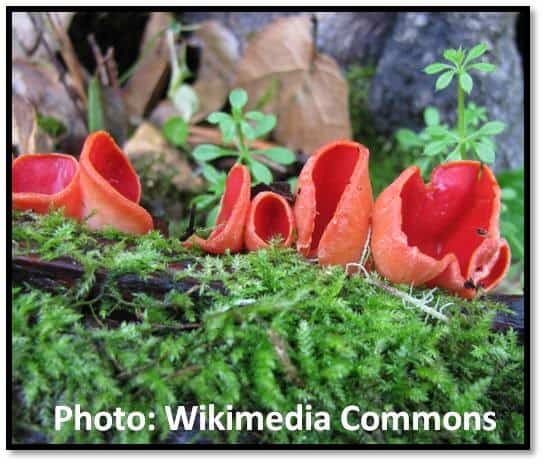
Another edible mushroom that fruits during our winter months in the PNW is the Scarlet Cup or Scarlet Elf Cup (Sarcoscypha coccinea). This saprobic hardwood decomposer seems to do quite well during our chilly months of the year. As one can see from the photo, it has a cuplike shape and a very visible bright red color. It also has a short stem and the cups surface has a light fuzziness to it; kind of like my mustache when I was thirteen. The Scottish mushroomer, Mark Williams, describes the flavour of this mushroom as “subtle, earthy flavour – fungal, with perhaps a hint of beetroot”. I mean, who doesn’t like the flavour of sautéed beetroot?
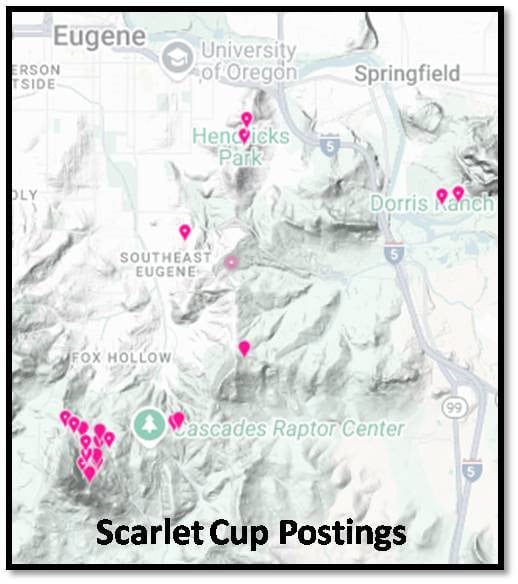
At a typical diameter of 2.5 inches or less, you will need to collect several for whatever recipe you have in mind. From what I can ascertain from the great WWW, this mushroom likes to decompose maple, alder and birch but might also decompose other hardwood tree species as well. It can be found on logs and smaller branches or fruiting at ground level from pieces of buried wood. It tends to like damp boggy areas, which Oregon has plenty of. This map shows inaturalist.org observations of Scarlet Cup around Eugene. The most sightings have been around the Fox Hollow area with an additional two sightings at Hendricks Park. As for ways to use this interesting little guy, I will once again refer you to our Scotsman at Galloway wild foods.
Unlike the velvet foot mushroom, I couldn’t find any references to deadly toxic galerina type mushrooms that look like the scarlet cup. However, the very similar looking Sarcoscypha austriaca and Sarcoscypha dudleyi are almost indistinguishable look-alikes to S. coccinea. Fortunately, these two imposters are not known to be poisonous and are mostly found in the eastern part of our country. There have only been three observations of S. austriaca on inaturalist.org in Oregon, all of which were found near Portland. While there were lots of eastern observations of S. dudleyi on inaturalist.org, there were none from the PNW.
While both Flammulina velutipes and Sarcoscypha coccinea are listed as edible, they are more difficult to correctly identify than other mushrooms we like to forage for. You definitely want to avoid eating these two mushrooms raw and cooking them well is highly recommended. Just remember, as with any mushroom, be certain about your identification; otherwise, just enjoy looking at them rather than taking a chance on being correct. Also, only eat a small amount of any new mushroom to make certain you don’t have issues with it and that you actually enjoy its flavor and texture. Remember to keep some of your mushroom collection to aid in confirming your identification if you do have reactions to it. Safety is always a priority.
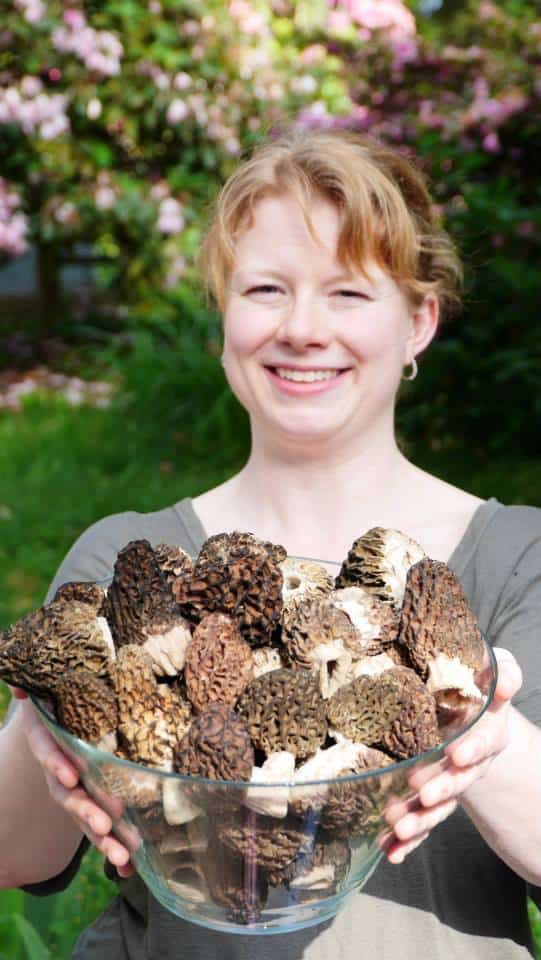
Besides Velvet Foot and Scarlet Cup, a few other winter fruiting mushrooms of interest can be found on Vern, Emily, and Lola’s Wildbarc website. This interesting group of web posters hail from Wales, (no rhyme intended). Seems we’ve gone all international with this article but one needs to go where the best information is, regardless of how far I had to electronically travel to get it. Now it’s time to put on your favorite winter hiking outfit and see what you can find in our amazing northwest forests. Take good notes and let us know what you’ve found at our next Myco Mingle at the Drop Bear Brewery in April.
Just a quick note for all you fair weather mushroom hunters. The Landscaping Black Morel (Morchella importuna) could be popping up around Eugene at any time now. Long time friend of CMS and morel whisperer Kristen Liberty uploaded this morel observation on March 5, 2022 in the Eugene area. Now that should get everyone excited.
Happy (and safe) mushrooming,
Ron

